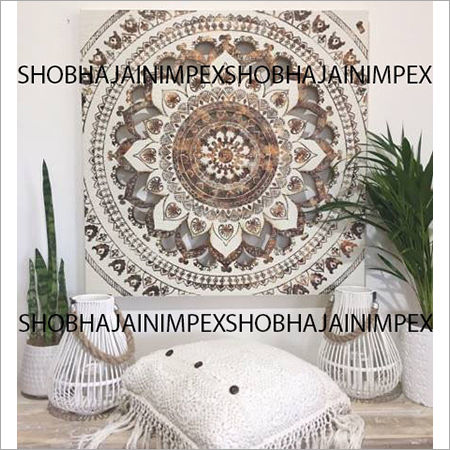GRC Jali
Product Details:
- Product Type Party Decoration
- Material GRC
- Use Commercial
- Color As Per Requirement
- Technics Normal
- Click to View more
X
GRC Jali Price And Quantity
- 100 Piece
GRC Jali Product Specifications
- Normal
- As Per Requirement
- GRC
- Party Decoration
- Commercial
GRC Jali Trade Information
- Cash on Delivery (COD)
- 5000 Piece Per Month
- 10 Days
- All India
Product Description
Glassfiber Reinforced Concrete (GRC) Jali is a architectural and decorative element made from a special type of concrete that is reinforced with glass fibers. "Jali" is a term commonly used in South Asian and Middle Eastern architecture to refer to perforated screens or lattices often used as decorative features in buildings. These screens provide a combination of privacy, ventilation, and aesthetics. GRC is a composite material that combines the strength of concrete with the flexibility and durability of glass fibers.
Here are some key characteristics and advantages of GRC Jali:
1. Lightweight: GFC is significantly lighter than traditional concrete, making it easier to handle and install.
2. Strength: Despite its lightweight nature, GRC is quite strong and can withstand structural loads and environmental conditions.
3. Flexibility in Design: GRC can be molded into various intricate designs and patterns, allowing for a wide range of artistic possibilities. This is particularly important for decorative elements like Jali screens.
4. Durability: GRC is resistant to weathering, corrosion, and other environmental factors, making it suitable for both indoor and outdoor applications.
5. Fire Resistance: GRC has good fire-resistant properties, making it a safe choice for architectural elements.
6. Customization: GRC Jali can be customized in terms of color, texture, and finish to match the overall design theme of a building.
7. Energy Efficiency: The perforations in the Jali screens can provide natural ventilation and daylighting, potentially reducing the need for artificial lighting and air conditioning.
GRC Jali is commonly used in a variety of architectural applications, including:
1. Facade Cladding: It can be used to create decorative facades on buildings, adding an aesthetically pleasing element to the exterior.
2. Balcony and Railing: GRC Jali can be used to create decorative railings for balconies or walkways.
3. Interior Partition: It can also be used as an interior partition or screen to separate spaces while maintaining a sense of openness.
4. Architectural Details: GRC Jali is often used to add intricate architectural details to buildings, such as window screens or decorative panels.
Overall, GRC Jali is a versatile and aesthetically pleasing architectural element that combines the benefits of modern materials with traditional design sensibilities. It is widely used to enhance the visual appeal and functionality of buildings.
FAQ:
1. What is GRC Jali?
Ans: GRC Jali is a decorative architectural element made from Glass Fiber Reinforced Concrete (GRC), which is a composite material that combines concrete with glass fibers. It is used to create intricate screens or lattices in buildings for aesthetic and functional purposes.
2. What are the advantages of using GRC Jali?
Ans: GRC Jali offers several advantages, including its lightweight nature, strength, flexibility in design, durability, resistance to weather and fire, customization options, and energy efficiency.
3. Where can GRC Jali be used?
Ans: GRC Jali can be used in a variety of architectural applications, such as facade cladding, balcony and railing design, interior partitions, and as decorative architectural details both indoors and outdoors.
4. How is GRC Jali customized?
Ans: GRC Jali can be customized in terms of design, pattern, color, texture, and finish to match the specific design requirements and aesthetics of a building.
5. Is GRC Jali suitable for outdoor use?
Ans: Yes, GRC Jali is suitable for outdoor applications. It is resistant to weathering, corrosion, and other environmental factors, making it a durable choice for both indoor and outdoor installations.
6. Does GRC Jali provide ventilation and daylighting?
Ans: Yes, the perforations in GRC Jali screens can provide natural ventilation and allow daylight to pass through, making it an energy-efficient choice that can reduce the need for artificial lighting and air conditioning.
7. Is GRC Jali fire-resistant?
Ans: Yes, GRC has good fire-resistant properties, making it a safe choice for architectural elements.
8. How is GRC Jali installed?
Ans: GRC Jali can be installed using standard construction techniques, such as anchoring or attaching to a building's structure. Installation methods may vary depending on the specific design and application.
9. Can GRC Jali be used in historic restoration projects?
Ans: Yes, GRC Jali can be used in historic restoration projects to replicate traditional architectural elements while benefiting from the advantages of modern materials.
10. What is the maintenance required for GRC Jali?
Ans: GRC Jali typically requires minimal maintenance. Regular cleaning to remove dust and dirt is usually sufficient to keep it looking good over the years.
11. Can GRC Jali be painted or stained?
Ans: Yes, GRC Jali can be painted or stained to achieve the desired color and finish. This allows for further customization and integration with the building's overall design.
12. Are there any limitations to using GRC Jali?
Ans: While GRC Jali offers many benefits, it's essential to work with experienced professionals who understand its properties and limitations to ensure proper installation and long-term performance.
Enter Buying Requirement Details
Other Products in 'GRC Jali and Screen' category
Our major export markets are United State, Canada, United Kingdom, Asia, Australia, Central America, North America, South America, Eastern Europe, Western Europe and Middle East.







 English
English Spanish
Spanish French
French German
German Italian
Italian Chinese (Simplified)
Chinese (Simplified) Japanese
Japanese Korean
Korean Arabic
Arabic Portuguese
Portuguese







